Lincoln Navigator:2023 Review
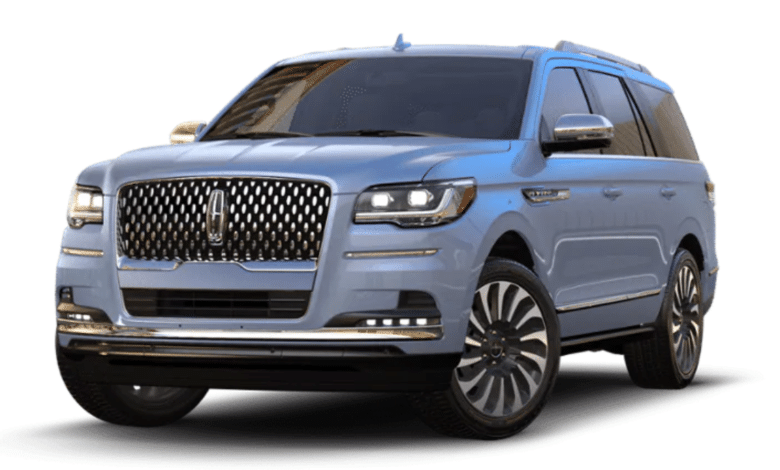
The fourth generation of Lincoln Navigator is a full-size, seven- or eight-passenger luxury SUV. This model, one of the first luxury SUVs to enter the market when it was introduced in 1998, has always been based on the Expedition platform developed by Ford, which in turn was derived from Ford’s truck platforms. This most recent Lincoln had a makeover for the 2018 model year and was then updated in 2022. This truck-based SUV is well-liked among livery drivers and is perfect for luxury consumers who value interior comfort and room.
The Navigator was redesigned for 2022, so there aren’t many significant upgrades besides new color options this year. Three standard trim grades are offered for this model. All costs include destination, and the basic model of the Standard begins at $81,860. The Reserve is $93,830, and the Black Label is $111,150. The long-wheelbase variant adds about 12 inches more cargo room and $3,000 more in cost isto the Reserve or Black Label.
The Navigator is closely related to its longstanding adversary, the Cadillac Escalade, due to its truck-based heritage and shared American oversized luxury aesthetic. Jeep’s revived Grand Wagoneer complements this huge brute, space-first attitude to luxury. While they often outperform Navigator regarding driveability and refinement, other non-truck competitors are comparable in pricing and shape. These automobiles include the Range Rover, the BMW X7, and the Mercedes GLS. The Navigator’s dynamic feel is less elegant than the Cadillac or Range Rover; instead, it favors leisurely, straight-ahead motoring.
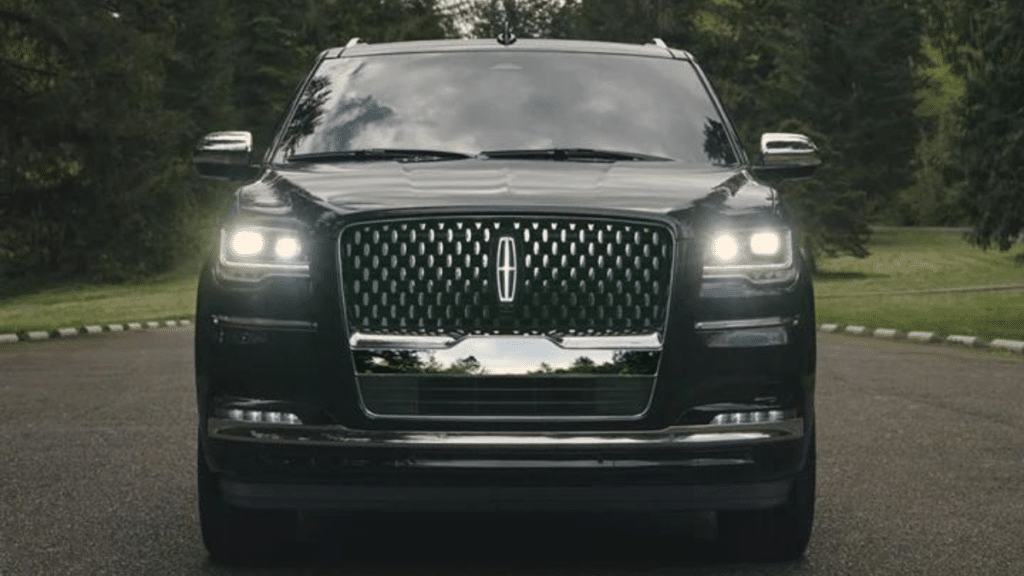
The superb 3.5-liter twin-turbocharged V6 that Ford and Lincoln deploy to great success throughout their lines powers all Navigator variants. This solid but refined engine, with 440 horsepower and 510 pound-feet of torque, is a viable substitute for thirstier V8s capable of handling the luxury tasks in this Navigator. It has a rear or four-wheel drive system with a discrete 10-speed automatic gearbox.
Due to the body-on-frame design and independent rear suspension, space is a significant benefit. It has a larger passenger capacity than the Escalade (as well as rival models from BMW and Mercedes); tall people may sit comfortably in either row. Comfort is a top emphasis, particularly on Reserve and Black Label versions, which feature front seats that seem eternally adjustable. Although the interior style and design don’t have the futuristic appearance of the Escalade’s many elegant displays, it does provide some much-needed elegance while deftly juggling the usage of screens and traditional tactile controls.
While the Navigator doesn’t have as many cutting-edge amenities as the Escalade, it still has plenty to satisfy high-end buyers. This consists of a 12.2-inch programmable digital instrument panel, an ActiveGlide hands-free driving system, a head-up display, pre-collision warnings, and automatic braking with pedestrian recognition in addition to a 13.2-inch touchscreen navigation system with Ford’s SYNC 4 system. Although the Navigator’s execution still seems a little archaic, it never lacks refinement or comfort and helps it stay up with more modern competitors.
Performance: Lincoln Navigator
A 3.5-liter, twin-turbocharged V6 with 440 horsepower and 510 pound-feet of torque powers every Navigator model. Both four-wheel drive and a 10-speed automatic gearbox are available to go with it.
Don’t be fooled by the V6 when the competition has V8s; this engine is strong and healthy. The engine never gives away that it isn’t a powerful V8; at whatever speed, there is always a ton of rich torque, and turbo lag doesn’t occur. It is teamed with a gearbox that provides smooth, precisely timed shifts and is constantly prepared to dish out a healthy grunt.
The V6 is also not afraid to pull, with a maximum towing capability of 8,700 pounds on the standard wheelbase model with rear-wheel drive. Even the least powerful Navigator (long-wheelbase variant with four-wheel drive) outperforms most Escalade versions regarding towing capacity at 8,100 pounds.
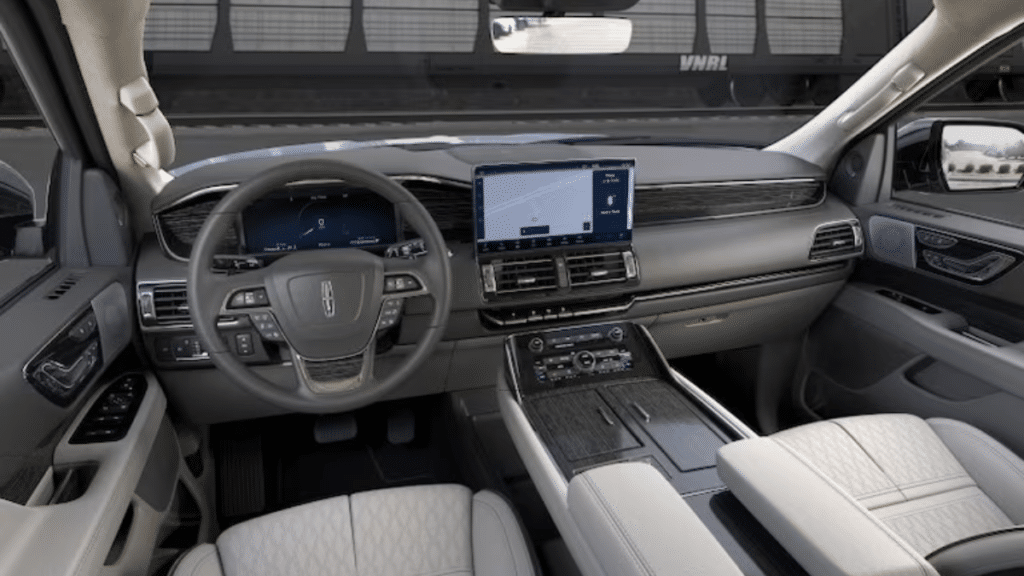
Fuel efficiency: Lincoln Navigator
Backward-wheel drive The EPA rates navigators at 17 cities, 23 highways, and 19 combined mpg; adding four-wheel drive reduces each number by one mpg.
These numbers are respectable on paper for a car this size. Still, they fall short of six-cylinder competitors like the Mercedes GLS450 and the BMW X7 xDrive40i, whose all-wheel drive, six-cylinder vehicles are rated at 20 and 22 mpg combined. Therefore, shopping German in this area could be preferable if fuel efficiency is vital to you.
Safety and driver support technology:
Although the Lincoln Navigator hasn’t been put through an Insurance Institute for Highway Safety (IIHS) crash test, it constantly receives five stars in the NHTSA’s new vehicle evaluation program.
All Navigator models include Lincoln Co-Pilot 360 2.0 as standard equipment, a collection of active safety features that also includes parking sensors, cross-traffic alerts with automatic braking, pre-collision alerts and braking with pedestrian detection, lane-keep assist, blind-spot assist, and adaptive cruise control with stop-and-go capabilities.
The high-end Black Label trim and the mid-range Reserve trim come Standard with ActiveGlide, Lincoln’s hands-free driving technology. This device was practical and beneficial for short bursts of hands-free highway driving. Still, it can’t compete with the Super Cruise system from General Motors, which is available on several Cadillac, GMC, and Chevy vehicles. Its capacity to precisely remain in the middle of the lane and its ability to inform the driver of its condition was insufficient.
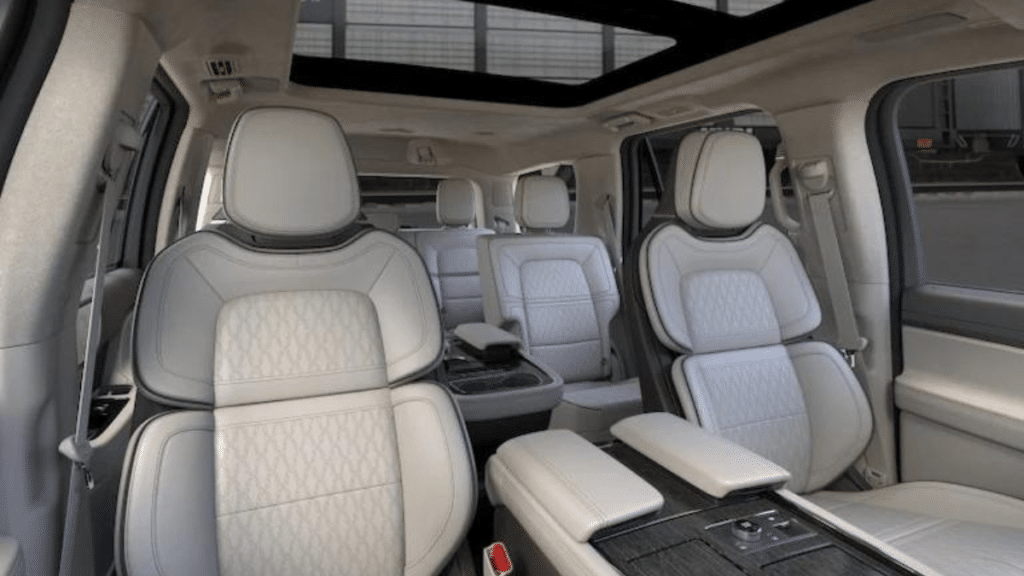
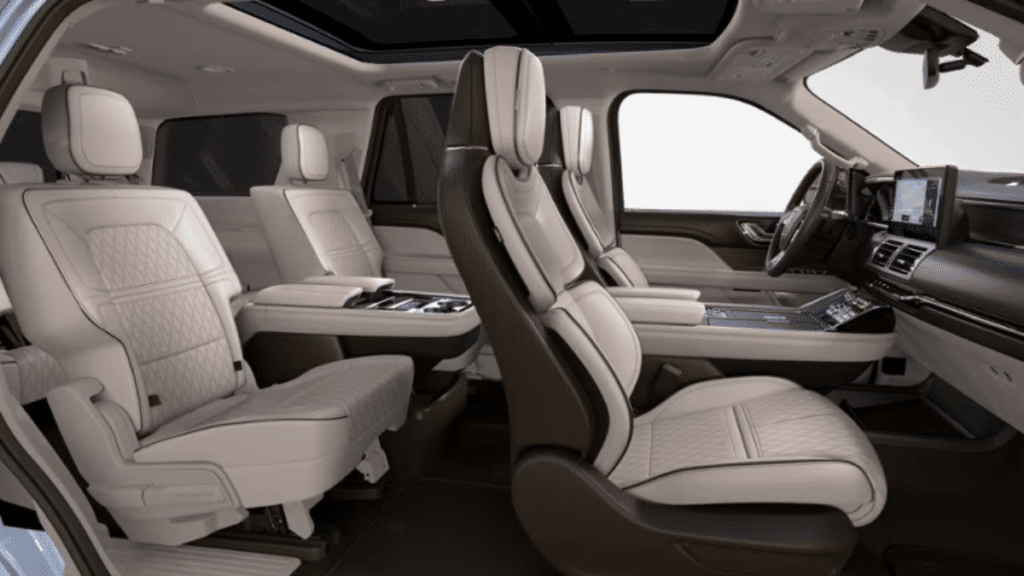
Comfort and Space
The Navigator’s interior offers precisely the kind of indulgent, pampered luxury you’d expect in a full-size SUV costing more than $100,000. At every pace and in any condition, it is quiet, well-built, and comfortable. No matter which row they are limited to, The Navigator provides passengers and cargo with more than adequate room. This Lincoln outperforms Jeep, BMW, and Mercedes competitors in space and maintains up with the Escalade.
On the Reserve level, the front seats are adjustable in 24-way configurations, while Black Label purchasers receive 30-way seats. That seems excessive before you perfect the settings and understand why all the bother is made. On lengthy road journeys, these chairs are fantastic and create the miles that fly by.
The Navigator has two standard captain’s chairs in the second row of seats, making it a seven-seater. The chairs adjust fore and aft and recline, which are very supportive and comfy. A second-row bench seat is an optional feature Lincoln provides for those who desire a full eight-passenger SUV.
The third row of seats is not the drawback of other huge SUVs: Three people can sit across since the floor is both low (so your knees won’t press against your chest) and flat. This implies that people (not just little children) may comfortably spend time in the third row.
Infotainment: Lincoln Navigator
The Navigator’s infotainment system has a single screen size available. The center-mounted touchscreen measures 13.2 inches and features wireless Apple CarPlay, Android Auto, and Ford’s SYNC 4 interface. The system runs efficiently, has easy-to-understand menus, and simultaneously incorporates CarPlay without interfering with other screen operations.
It is a pleasant change from the screen-only world that so many premium manufacturers embrace that there are actual knobs and buttons below the screen that control things like the volume or tuning. The Navigator’s clever fusion of technology and tradition shows that many temperature control features may also be operated via physical buttons. Additionally, the Navigator offers three USB-A and C connectors for the first two rows and two additional ports for the third row.
The ActiveGlide hands-free driving system’s overall usefulness is improved by the Black Label’s standard head-up display, which also shows the system’s status. All Navigatave has a standard 12-inch digital instrument panel display that can be customized to offer different types of information according to the driver’s preferences.

Storage & Cargo Space: Lincoln Navigator
When the third row of seats is upright, the standard-wheelbase Navigator offers 19.3 cubic feet of room behind them. The rear compartment of the extended wheelbase Navigator L provides 34.3 cubic feet of space. The Navigator offers 57.5 cubic feet of space (up to 63.6 cubes in specific configurations) when the third row is folded, while the L has an enormous 73.3 cubic feet.
The Grand Wagoneer L (85.3) and the GMC Escalade (standard length or long-wheelbase, which extends to 72.9 cubes with the third row folded down) provide somewhat greater capacity, while the Mercedes GLS (54.2) and the BMW X7 (48.8) do not come close.
The second and third rows of seats may be folded flat at the push of a button since this is a premium SUV. Parents should also be aware that the second row of seats can be moved up and out of the way without folding to provide access to the third row, so you can leave a car seat in the second row and still move it out of the way when loading or unloading people.
Design: Lincoln Navigator
The Navigator typically matches the other full-size luxury SUVs in terms of execution and appearance. The materials (open-pore wood, silky leather, and chrome accents) are friendly but not class-leading, and the build quality is outstanding. The bottom door trim and the interior panels in the third row of seats are made of harsh, inexpensive plastics, which the Navigator uses to hide its Ford heritage (remember, it is based on the Expedition SUV). You’ll never encounter these problems with a BMW or Mercedes. Despite this, the Navigator’s interior is beginning to seem dated compared to its more contemporary and newer competitors.
The outside styling is more similar; it qualifies as a powerful, pricey SUV, but it hasn’t changed much throughout this generation to be considered modern. Overall, the Navigator should satisfy current Ford and Lincoln buyers. Still, it is unlikely to persuade someone unfamiliar with the brand to select it over a Cadillac, Mercedes, BMW, or even the Grand Wagoneer.
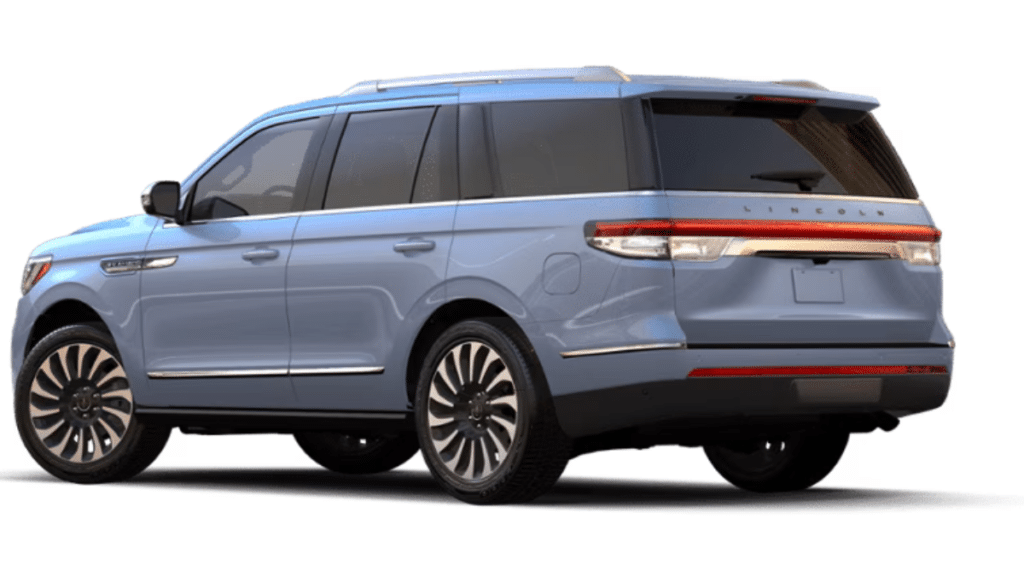
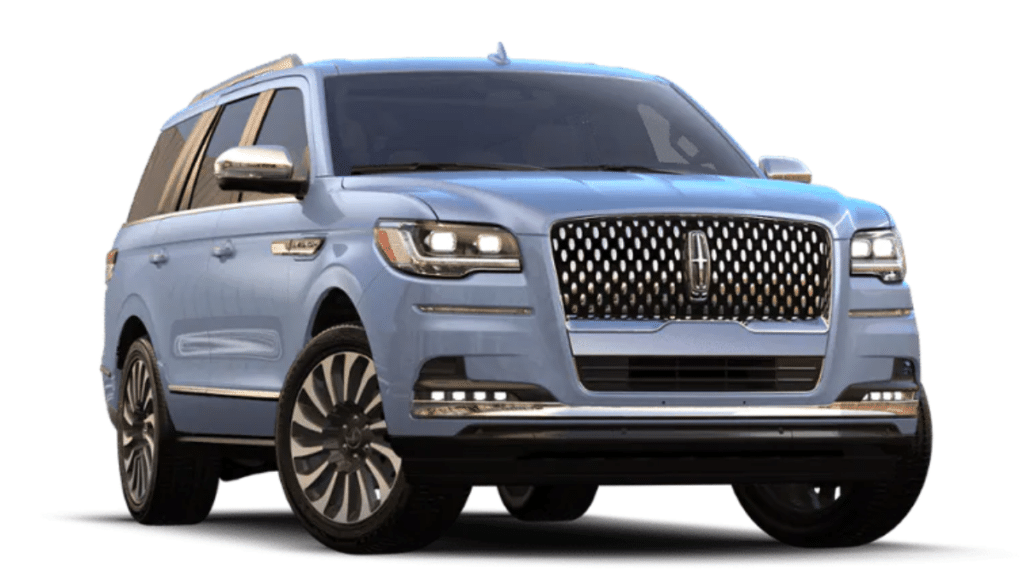
The 2023 Lincoln Navigator: Is It Priced Right?
The most intelligent move for Navigator purchasers is to choose the basic model, which lists $81,420, including destination, based on what the rival set provides for comparable money. With this grade, you get everything that makes the Navigator great—a strong engine, valuable amenities, and remarkable safety features—without crossing into price ranges more appropriate for opulent competitors.
The Navigator costs more than $11,000 more in Reserve, the trim level above, without much altering the entire experience. The Black Label is then an additional $17,000, and once again, it doesn’t substantially change the background to warrant the price increase.
The competition for luxury SUVs costing $100,000 or more is extremely fierce. Unfortunately, for Lincoln, competitors like Mercedes and BMW are far better at satisfying the demanding demands of those customers.
Lincoln is providing a $5,000 reimbursement to a “small number of Lincoln Navigator clients” whose 2022 car will be upgraded to 2023 to entice them to wait to purchase a 2022 Navigator. The refund covers the price increase.
How Much Will Insurance on a 2023 Lincoln Navigator Cost?
The Navigator’s insurance costs are comparable to or less than most of its competitors. Although this averages all 50 states, a typical 30-year-old female driver with a clean record should anticipate a yearly premium of $2,854 for the basic. The L Black label costs more than $3,270 annually. Starting costs for a Cadillac Escalade owner might be $2,875 compared to $3,446 for a Jeep Grand Wagoneer and $3,100 for a Mercedes-Benz GLS.
Verdict
A bigger infotainment screen inside the full-size 2023 Navigator SUV, which is now running better and more recent software, as well as the inclusion of ActiveGlide, Lincoln’s substandard hands-free driving system, help it remain competitive after being updated for the 2022 model year. The exterior changes improve the model’s appearance. The robust twin-turbo V6 is still there, with its 440 horsepower splendor, and it mates well with a silky 10-speed automatic gearbox. The Navigator can only do so much to conceal its truck-based foundation or match the finesse of unibody competitors, making the ride quality less commendable.




